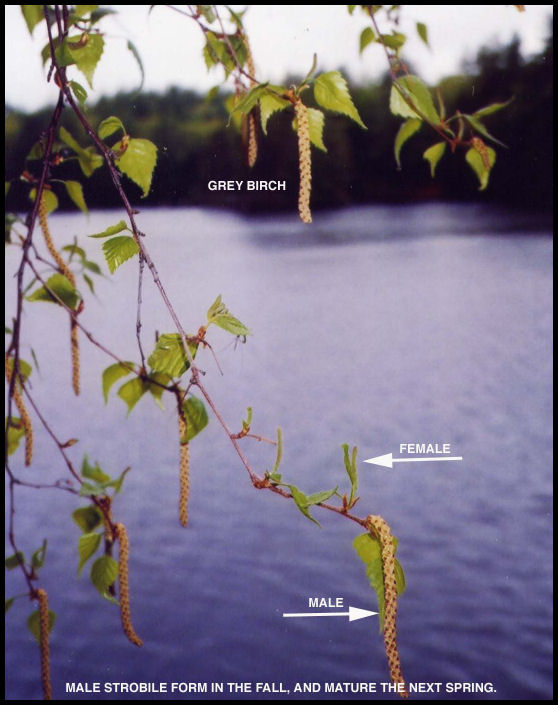
Catkins - A discussion with Dr. Kevin Smith.
As we discussed, those long droopy things produced at the ends of branchlets of oaks, birches, poplars, alders, etc. are technically referred to as catkins (because of their fanciful resemblance to the tail of a cat) or aments (from the Latin word for strap or thong).
They are compound inflorescences and are made up of bunches of small flowers. Usually the flowers in a single catkin are unisexual. Most of the catkins that are obvious and litter the ground when they fall are staminate (male) flowers and produce pollen. Their pendulant, droopy form is very effective for wind dispersal of pollen. In some trees, including many (all?) oaks, only the male flowers form catkins and the female flowers are borne individually at the base of branchlets. In oaks, the female flowers are quite inconspicuous until after fertilization and the acorns begin to develop. Flowers in catkins frequently do not produce petals. The little petal-like things around the anthers (the pollen-bearing parts) are actually bracts or modified leaves.
Due to genetic programming and environmental conditions,
female flowers are receptive to pollen for only a short time. After
the pollen is released, the male catkins are shed. Any female flowers
that were not fertilized are also shed. Although perhaps a nuisance on
sidewalks and roadways, the shed
catkins rapidly decay in forest settings and the remaining chemical elements
are released back into the soil for another cycle.
I hope that helps!
Kevin.
Kevin T. Smith, Ph.D.
Plant Physiologist and Project Leader, Research Work Unit NRS-10
USDA Forest Service
271 Mast Road, Durham, NH 03824, USA
Voice: 603.868.7624 Fax: 603.868.7604 Email:
ktsmith@fs.fed.us
Below: A picture of catkins by SHIGO DVD's

Dictionary MAIN
PAGE
Text & Graphics Copyright © 2008 Keslick & Son Modern Arboriculture
Please report web site problems, comments and words of interest, not
found.
Contact